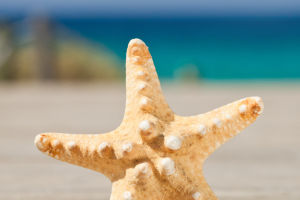The jellyfish is often regarded as a symbol of the sea, but some people may view it as a relatively weak creature. However, as the most common species in the ocean, the jellyfish must have some valuable traits that enable them to reproduce tenaciously and survive today.
Being a primitive mollusk, the life of a jellyfish is divided into two stages. First, it starts as a hydroid body that is fixed in one location, and then it transforms into a jellyfish that can swim around. This transformation is almost as irreversible as the metamorphosis of a tadpole into a frog, but there is a unique species of jellyfish called the lighthouse jellyfish that has the ability to revert back into a hydroid.
The vast majority of jellyfish have toxins in their bodies, which they use as their primary means of hunting and defense. They have stinging cell needles on their tentacles that they use to inject toxins into their prey, paralyzing them. Jellyfish have toxins of varying strengths, with the box jellyfish being the most well-known for having the strongest toxins of any species known to humans, making it almost incurable.
Apart from the box jellyfish, there are many other species of jellyfish with their own unique features and dangers. Here are a few examples:
1. Hair-like Kasumi Jellyfish
The hair-like Kasumi jellyfish is a true giant among jellyfish, with a dome that can reach up to 2.5 meters in diameter and tentacles that can stretch up to 30 meters long. Being stung by these animals can be very painful, and their venomous toxins can cause allergic reactions in humans and kill small animals.
2. Irukandji Jellyfish
Although the jellyfish itself is only 15-20 mm in diameter, its tentacles can be up to 35 cm long. Despite its small size, this is one of the most dangerous and poisonous jellyfish in the world, and its bite can lead to a condition known as Irukandji syndrome. Even a small amount of poison can cause severe pain in various parts of the body, vomiting, cramps, burning skin, heart palpitations, high blood pressure, and acute heart failure.
3. Luminous Swimming Jellyfish
This jellyfish can emit a brief flash of light, and its color changes from pink and purple to gold. They often wash up on the beach due to their proximity to the shore. Although the dome of the jellyfish is only 6-12 cm in diameter, their toxins can cause burning, inflammation, allergic rashes, and blisters.
4. Monk's Hat Jellyfish
The killer weapon of the Monk's Hat jellyfish is its tentacles. Despite their tiny size, the tentacles can reach up to 9 meters in length, making it difficult for swimmers to dodge them. Although the toxin secreted by a single stinger cell is insignificant, the combined toxins of thousands of stinger cells can be as potent as that of any venomous snake in the world.
5. Australian Square Jellyfish
The Australian jellyfish is known as the world's king of poison. This creature looks like a blue transparent jellyfish at the bottom of the sea, with four obvious large tentacles, followed by 15 tentacles containing venom cells. Once bitten, humans can die within three minutes, and the death is excruciatingly painful. It can lead to heart disease and neurological damage within a few minutes, making it one of the most lethal creatures in the ocean. Despite its deadly nature, the Australian jellyfish is also a visually stunning sea creature.


